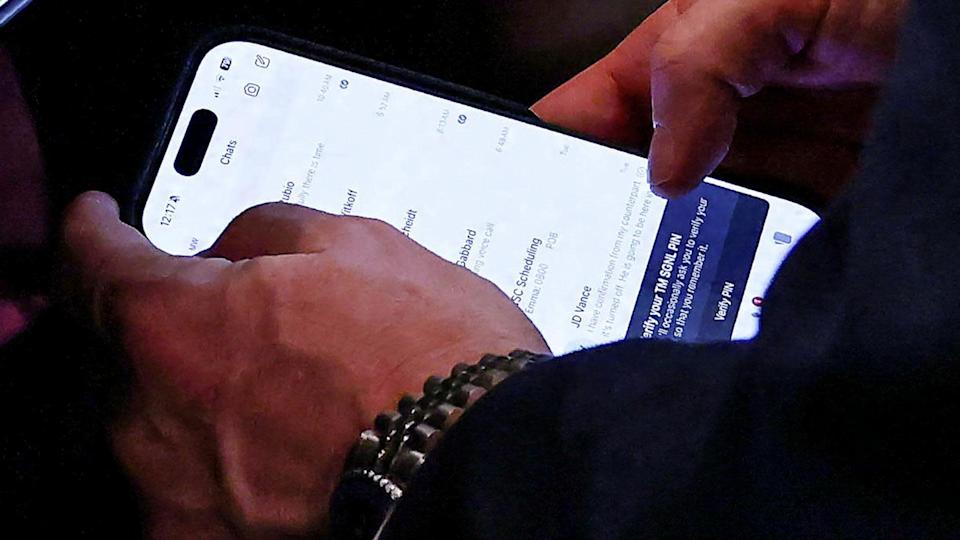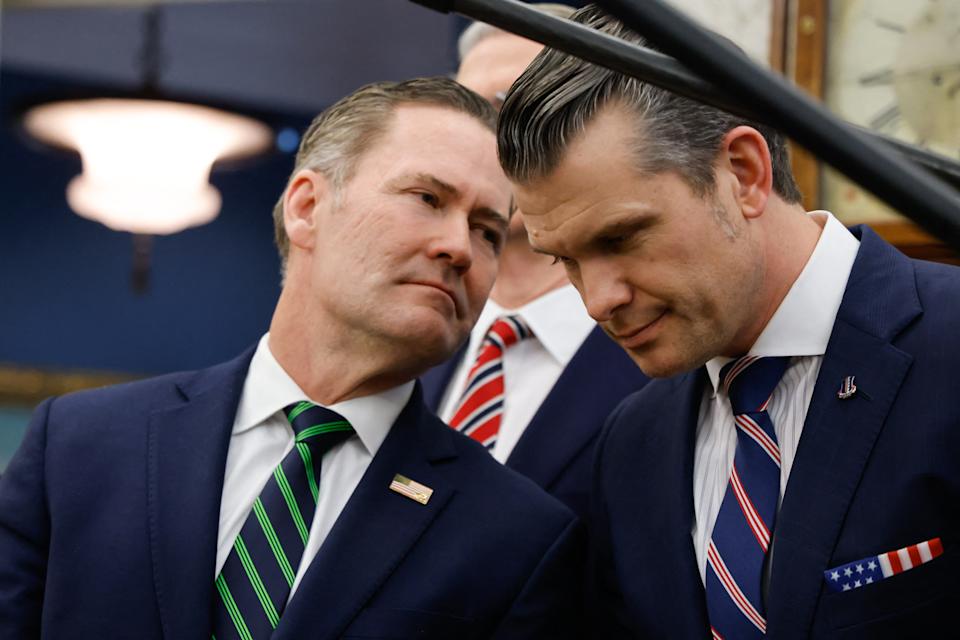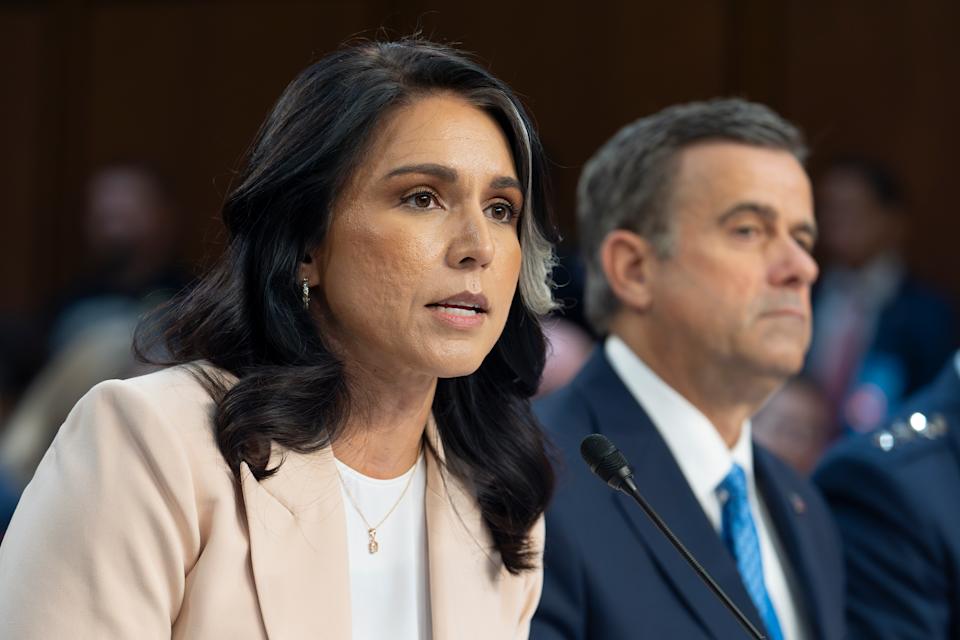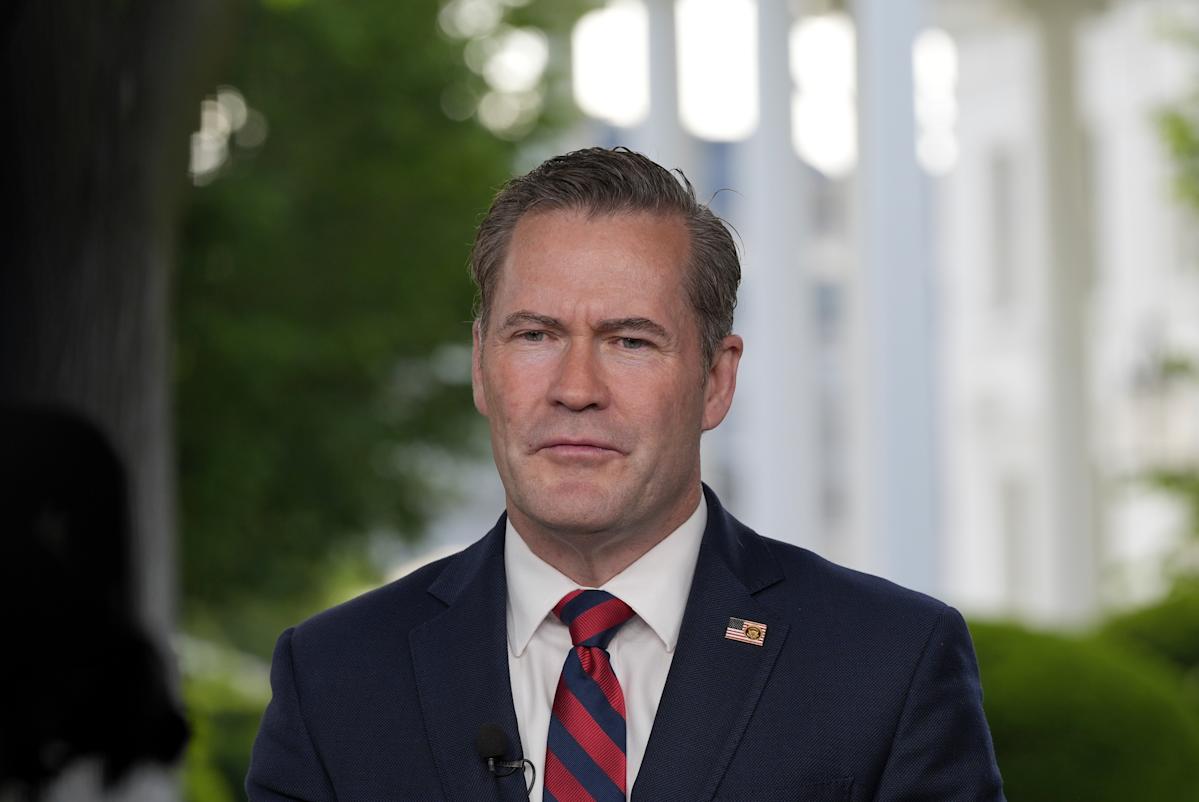President Trump said Thursday he is removing Mike Waltz from his role as national security adviser and in the interim replacing him with Secretary of State Marco Rubio.
Trump said he’s nominating Waltz to instead serve as the United States ambassador to the United Nations.
“From his time in uniform on the battlefield, in Congress and, as my National Security Advisor, Mike Waltz has worked hard to put our Nation’s Interests first,” Trump wrote in a Truth Social post. “I know he will do the same in his new role.”
Trump added: “In the interim, Secretary of State Marco Rubio will serve as National Security Advisor, while continuing his strong leadership at the State Department.”
Multiple news outlets reported earlier Thursday that Trump was planning on ousting Waltz as national security adviser, just over a month after the Signal group chat security breach.
Waltz was photographed using the Signal app during a Cabinet meeting on Wednesday, a day before his departure.

National Security Advisor Mike Waltz checks his mobile phone while attending a Cabinet meeting held by President Donald Trump at the White House in Washington, D.C., on April 30. (Evelyn Hockstein/Reuters)
In March, high-ranking members of the administration accidentally shared plans about a forthcoming U.S. military attack on Yemen with the top editor of the Atlantic magazine on the Signal messaging app.
Trump initially defended Waltz, downplaying the security risks and insisting that no classified material had been shared. The day after the breach was made public, the president called Waltz “a good man” who “learned a lesson.”
But Politico reported Thursday that Waltz had since “lost the confidence of other administration officials.”
His exit marks the first major staff departure for the second Trump administration.
What happened, exactly?
The Atlantic’s editor in chief, Jeffrey Goldberg, revealed in an article published in late March that he knew about U.S. airstrikes against Iran-backed Houthi rebels in Yemen hours before they happened, because he was added to a Signal group chat where members of the Trump administration appeared to be discussing such war plans.
Goldberg said he received a Signal connection request on March 11 from someone whom he believed to be Michael Waltz, President Trump’s national security adviser. Two days later, Goldberg said he was added to a conversation with 18 members of the administration — including Defense Secretary Pete Hegseth, Vice President JD Vance, Secretary of State Marco Rubio, CIA Director John Ratcliffe and Director of National Intelligence Tulsi Gabbard — where they talked about plans to bomb Yemen.
U.S. air and naval assets hit multiple Houthi targets in Yemen on March 15.
Goldberg said that he initially did not think the Signal group chat was real. “I could not believe that the national security leadership of the United States would communicate on Signal about imminent war plans,” he wrote. “I have never seen a breach quite like this.
“It is not uncommon for national security officials to communicate on Signal,” Goldberg added. “But the app is used primarily for meeting planning and other logistical matters — not for detailed and highly confidential discussions of a pending military action. And, of course, I’ve never heard of an instance in which a journalist has been invited to such a discussion.”
What did Waltz say?

Waltz with Defense Secretary Pete Hegseth. (Ludovic Marin/Pool via AP)
In an interview with Fox News a day after the Atlantic revelation, Waltz said that he took “full responsibility” for the “embarrassing” security breach, and that he built the group chat himself.
“I take full responsibility. … I built the group,” Waltz said. “My job is to make sure everything’s coordinated.”
But Waltz also claimed he doesn’t know how Goldberg was added to the chat, nor who Goldberg was.
“I can tell you for 100% I don’t know this guy,” Waltz said.
Before coming to the White House, Waltz, a former Army Special Forces officer, represented Florida’s Sixth Congressional District in the U.S. House.
What about the other officials who were on the Signal chat?

Director of National Intelligence Tulsi Gabbard and CIA Director John Ratcliffe. (Scott Applewhite/AP)
Hegseth repeatedly bristled at questions from reporters about the breach, and flatly denied sharing any sensitive military information.
“Nobody’s texting war plans,” Hegseth said on March 25. “I know exactly what I’m doing.”
Appearing before the Senate and House Intelligence committees the same week, Gabbard and Ratcliffe were grilled by Democrats over the breach, which they both sought to downplay.
Gabbard acknowledged the inclusion of a Goldberg on the Signal chat was a mistake, but also said no classified information was shared.
Rubio, however, vowed that there would be reforms and changes to prevent such a leak from reoccurring.
“It’s not going to happen again,” Rubio said on March 25. “It can’t.”
